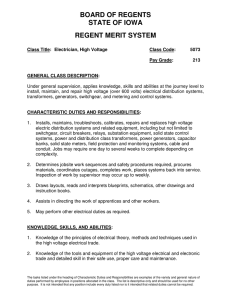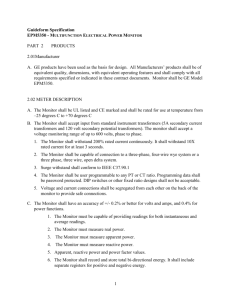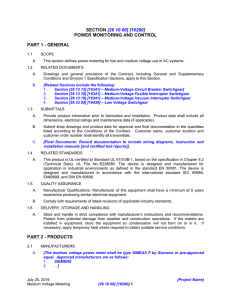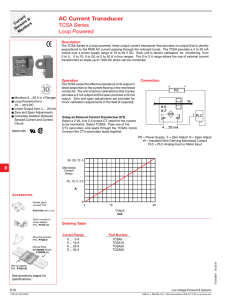W H Electrical Load Monitoring Why Test? Series
advertisement
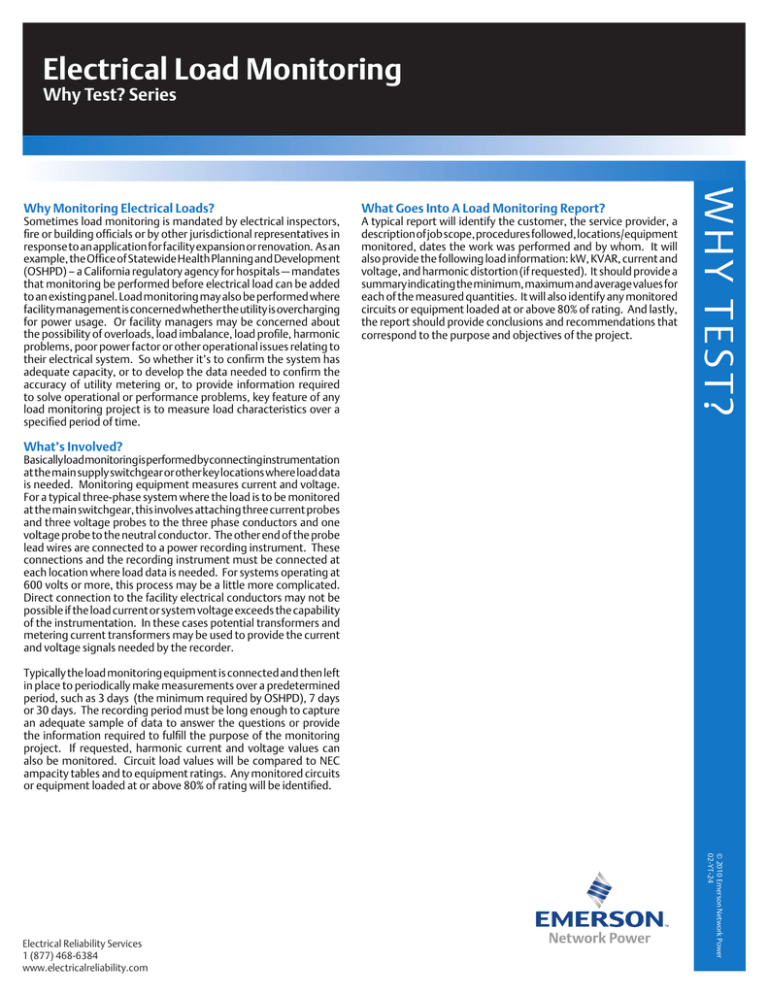
Electrical Load Monitoring Why Test? Series Sometimes load monitoring is mandated by electrical inspectors, fire or building officials or by other jurisdictional representatives in response to an application for facility expansion or renovation. As an example, the Office of Statewide Health Planning and Development (OSHPD) – a California regulatory agency for hospitals — mandates that monitoring be performed before electrical load can be added to an existing panel. Load monitoring may also be performed where facility management is concerned whether the utility is overcharging for power usage. Or facility managers may be concerned about the possibility of overloads, load imbalance, load profile, harmonic problems, poor power factor or other operational issues relating to their electrical system. So whether it’s to confirm the system has adequate capacity, or to develop the data needed to confirm the accuracy of utility metering or, to provide information required to solve operational or performance problems, key feature of any load monitoring project is to measure load characteristics over a specified period of time. What Goes Into A Load Monitoring Report? A typical report will identify the customer, the service provider, a description of job scope, procedures followed, locations/equipment monitored, dates the work was performed and by whom. It will also provide the following load information: kW, KVAR, current and voltage, and harmonic distortion (if requested). It should provide a summary indicating the minimum, maximum and average values for each of the measured quantities. It will also identify any monitored circuits or equipment loaded at or above 80% of rating. And lastly, the report should provide conclusions and recommendations that correspond to the purpose and objectives of the project. W H Y T EST? Why Monitoring Electrical Loads? What’s Involved? Basically load monitoring is performed by connecting instrumentation at the main supply switchgear or other key locations where load data is needed. Monitoring equipment measures current and voltage. For a typical three-phase system where the load is to be monitored at the main switchgear, this involves attaching three current probes and three voltage probes to the three phase conductors and one voltage probe to the neutral conductor. The other end of the probe lead wires are connected to a power recording instrument. These connections and the recording instrument must be connected at each location where load data is needed. For systems operating at 600 volts or more, this process may be a little more complicated. Direct connection to the facility electrical conductors may not be possible if the load current or system voltage exceeds the capability of the instrumentation. In these cases potential transformers and metering current transformers may be used to provide the current and voltage signals needed by the recorder. Typically the load monitoring equipment is connected and then left in place to periodically make measurements over a predetermined period, such as 3 days (the minimum required by OSHPD), 7 days or 30 days. The recording period must be long enough to capture an adequate sample of data to answer the questions or provide the information required to fulfill the purpose of the monitoring project. If requested, harmonic current and voltage values can also be monitored. Circuit load values will be compared to NEC ampacity tables and to equipment ratings. Any monitored circuits or equipment loaded at or above 80% of rating will be identified. © 2010 Emerson Network Power 02-YT-24 Electrical Reliability Services 1 (877) 468-6384 www.electricalreliability.com



